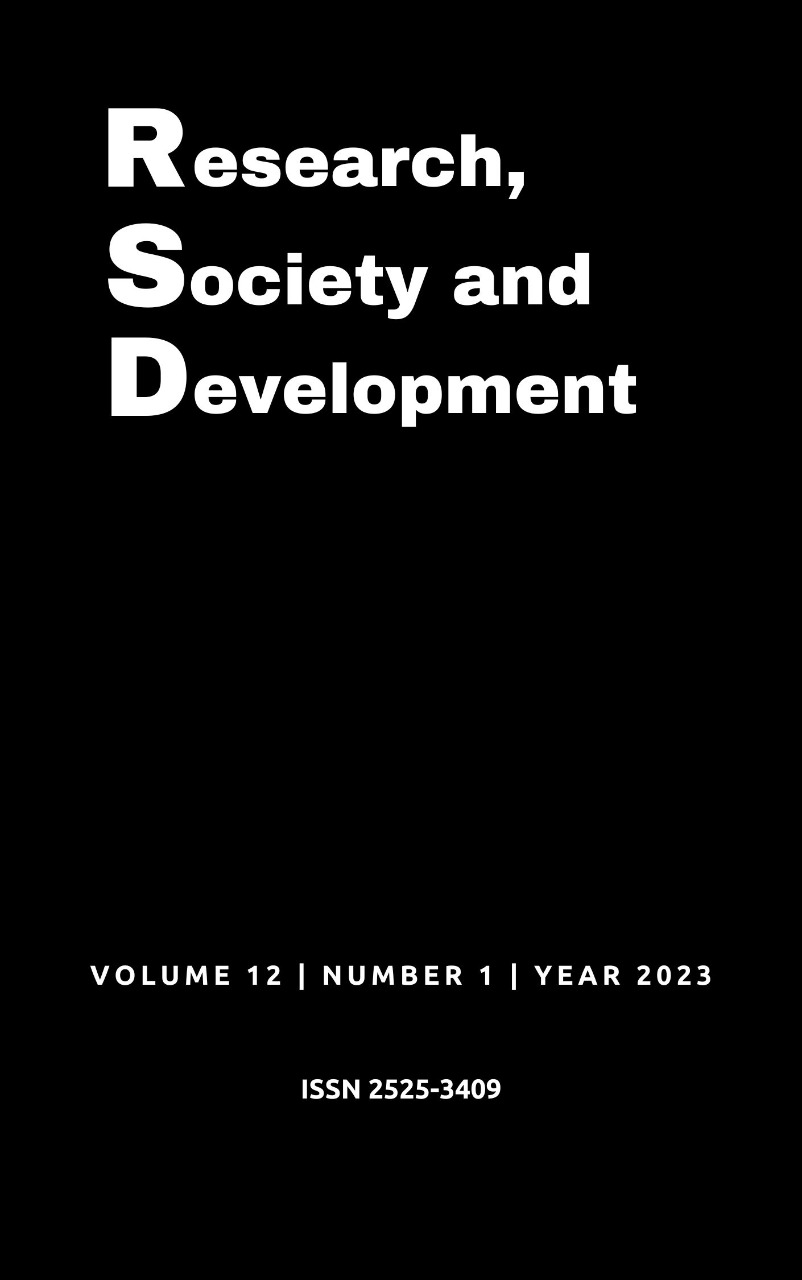Reflections on the impacts of breast cancer treatment on women's family dynamics
DOI:
https://doi.org/10.33448/rsd-v12i1.39372Keywords:
Family dynamics, Breast cancer, Treatment impact.Abstract
Breast cancer is the second most common type of cancer among women and the deadliest in the world. Estimates point to a significant increase in new cases of this type of cancer in recent years, which characterizes a thematic theme such as the problem of public health. The objective of the study is to understand the impacts and family dynamics of women in the treatment of breast cancer. The results indicate that the diagnosis and treatment impact on several dimensions of a woman's life, including a family member. The illness by cancer affects the whole family, which is an interconnected system, in which one exercise influences the others. Among these impacts, there is also the fear of losing this woman to the disease, the changes in social roles are highlighted, emotions such as anxiety, feelings of impotence, anger, sadness, stress and demands on the part of companions are also perceived. . Deepen public knowledge, so that it is possible to develop relevant strategic strategies, since it is necessary for this knowledge to be relevant, since this performance of the hospital psychologist is once necessary.
References
Ambrósio, D. C. M., & Santos, M. A. (2011). Vivências de familiares de mulheres com câncer de mama: uma compreensão fenomenológica. Revista Psicologia: Teoria e Pesquisa, 27(4), 475-484. DOI: http://dx.doi.org/10.1590/S010 2-37722011000400011.
Bardin, L. (2016). Análise de Conteúdo. São Paulo: Edições 70.
Bucher-Maluschke, J. S. N. F. et al. (2014). Dinâmica familiar no contexto do paciente oncológico. Revista do NUFEN, 6(1), 87-108.
Carvalho, P. G., O´Dwer, G., Rodrigues, N. C. P. (2018). Trajetórias assistenciais de mulheres entre diagnóstico e início de tratamento do câncer de colo uterino. Saúde em Debate[online]., 42 (118), 687-701. DOI: https://doi.org/10.1590/0103-1104201811812.
Cecilio, S. G. et al. (2013). A visão do companheiro da mulher com histórico câncer de mama. Reme: Rev. Min. Enferm. [online]., 17 (1), 24-32. DOI. http://dx.doi.org/10.5935/1415-2762.20130003.
Costa, J. M. et al. (2016). Repercussões biopsicossociais do diagnóstico de câncer colorretal para pacientes oncológicos. Revista da SBPH, 19(2), 5-23.
Cooper, H. M. (1989). Interating research: A guide for literature reviews. 2. ed. Newbury Park. Sage.
Ercole, F. F., Melo, L. S., & alcoforado, C. L. G. C. (2014). Revisão integrativa versus revisão sistemática. Revista Mineira de Enfermagem, 18 (1), 9-12.
Ferreira, N. M. L. et al. (2010). Câncer e família: compreendendo os significados simbólicos. Revista Ciência, Cuidado e Saúde, 9(2), 269-277. DOI: http://dx.doi.org/10.4025/cienc cuidsaude.v9i i2.8749.
Instituto Nacional do Câncer. (2020). Ministério da Saúde. Tipo de Câncer: Mama/tratamento. Rio de Janeiro: INCA.
Lacerda, C. S., Balbino, C. M. et al. (2020). Enfrentamento de mulheres com câncer de mama. Research, Society and Development, 9(7), e165974018-e165974018.
MC Graw, S. L., & Ferrante, J. M. (2014). Update on prevention and screening of cervical câncer. World J Clin Oncol, 5(4), 744-742.
Martins, A. R. B., Ouro, T. A., & & Neri, M. (2015). Compartilhando vivências: contribuição de um grupo de Apoio para mulheres com câncer de mama. Revista da SBPH, 18(1), 131-151.
Mendes, K. D. S., Silveira, R. C. C. P., & Galvão, C. M. (2008). Revisão integrativa: método de pesquisa para incorporação de evidências na saúde e na enfermagem.Texto Contexto Enferm, 17 (4), 758-64.
Mattos, L. M. et al. (2020). O conhecimento e a prática da realização do autoexame das mamas: uma revisão integrativa. Research, Society and Development, 9(4), e158943028-e158943028.
Nascimento, A. N. et al. (2011). Estratégias de enfrentamento de familiares de mulheres acometidas por câncer de mama. Ciência, Cuidado e Saúde, 10(4), 789-794.
Sanchez, K. D. O. L. et al. (2010). Apoio social à família do paciente com câncer: identificando caminhos e direções. Revista Brasileira de Enfermagem, 63, 290-299.
Silva, P. L. N. et al. (2013). O significado do câncer: percepção de pacientes. Rev enferm UFPE on line., Recife, 7(12), 6828-6833.
Smeltzer, S. C. et al. (2008). Tratado de Enfermagem Médico-Cirúrgica. 11. ed. Rio de Janeiro (RJ): Guanabara Koongan.
Sousa, S. M. M. T. et al. (2022). Acesso ao tratamento da mulher com câncer de mama. Saúde Em Debate, 43(122), 727–741.
Quirino, D. D., & Collet. N. (2012). Câncer no latente: readaptações na vida familiar. Revista Texto e contexto de enfermagem, 21(2), 295-303. DOI: http://dx.doi.org/10.1590/S010 4-07072012000200006.
Roman, A. R., & Friedlander, M. R. (1998). Revisão integrativa de pesquisa aplicada à enfermagem. Cogitare Enfermagem, 3 (2).
Valadão, I. C. (2019). Matriz Tridimensional de colágeno tipo I regulando células-tronco do câncer de mama. (Tese de Doutorado). Universidade de São Paulo, São Paulo, SP.
Downloads
Published
Issue
Section
License
Copyright (c) 2022 Elizângela Pereira da Silva; Francisco Fabrício Pinto Prado Parente; Georgia Maria Melo Feijão; Rogeane Morais Ribeiro; Denise Nogueira Lima; Alexsandra Maria Sousa Silva

This work is licensed under a Creative Commons Attribution 4.0 International License.
Authors who publish with this journal agree to the following terms:
1) Authors retain copyright and grant the journal right of first publication with the work simultaneously licensed under a Creative Commons Attribution License that allows others to share the work with an acknowledgement of the work's authorship and initial publication in this journal.
2) Authors are able to enter into separate, additional contractual arrangements for the non-exclusive distribution of the journal's published version of the work (e.g., post it to an institutional repository or publish it in a book), with an acknowledgement of its initial publication in this journal.
3) Authors are permitted and encouraged to post their work online (e.g., in institutional repositories or on their website) prior to and during the submission process, as it can lead to productive exchanges, as well as earlier and greater citation of published work.


